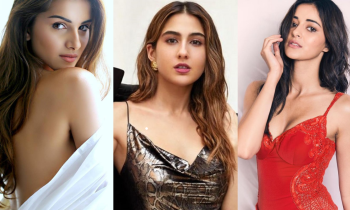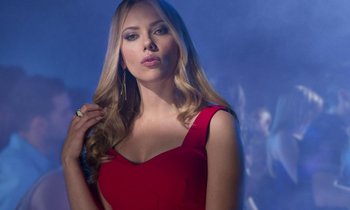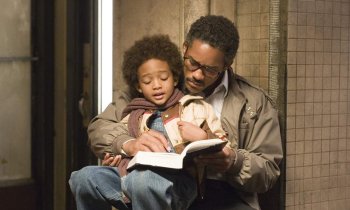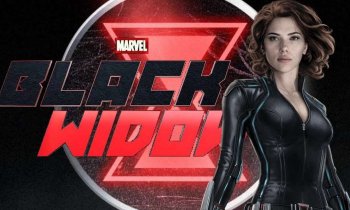Table of Contents
The 1990s proved to be a pivotal period for movies, characterized by revolutionary technological progress, innovative storytelling techniques, and the rise of distinct artistic perspectives that challenged conventional narratives. That was also the era when lesbian characters emerged in movies. Of course, it was not at its very best in the early days, but things gradually changed for the better.

Today's social and cinematic evolution
In recent years, there has been a noticeable transformation in the portrayal of lesbian characters in movies, marking a significant departure from the 1990s. During the 1990s, these storylines were primarily found in independent or avant-garde films, frequently confined to clichéd portrayals.
Presently, popular films and shows such as "Carol," "Blue Is the Warmest Color," and "Orange is the New Black" highlight multifaceted and varied lesbian characters who play essential roles in their storylines, depicting their everyday struggles, dates and hookups, as well as regular social interactions.
Furthermore, LGBTQ+ filmmakers and actors play a significant role in the narrative, resulting in a heightened sense of genuineness in the portrayals. But, if you go on a dating site designed for movie buffs seeking a lesbian hookup near me, you will find them talking about movies from the 90s and how they transformed everything for the community.
Interesting facts from the 90s
Let's talk about some interesting facts about movies from the 90s that paved the way for modern-day lesbian representation in the mainstream media.
"Bound" (1996): A Game-Changer
"Bound" (1996), a neo-noir crime thriller directed by the Wachowskis, is a standout film that showcases their remarkable talent during the 90s. The movie was revolutionary not just for its gripping storyline and artistic visuals but also for its courageous portrayal of a lesbian hookup turning into a love story.
In the movie, Corky and Violet are portrayed by Gina Gershon and Jennifer Tilly, and their unique romantic connection challenges societal norms and expectations. In contrast to numerous works of its time, "Bound" presented lesbian characters as intricate and multifaceted individuals rather than mere symbols or subjects of fetishistic intrigue.
The storyline seamlessly integrated the characters' romance, presenting a genuine depiction of lesbian relationships without resorting to sensationalism, which resonated with audiences and proved a game-changer in every sense of the word.
The Rise of Indie Gems
The 90s era proved especially favorable for indie movies exploring LGBTQ+ storylines. Within the realm of indie treasures, "Go Fish" (1994), helmed by the visionary Rose Troche, stood out as a groundbreaking work of art.
The distinctiveness of it resided in the aspect that it encompassed not only lesbians; it was also brought into existence by them. The movie showcased a remarkable display of talent as it was both written and performed by a cast of lesbian actors, offering a genuine representation of lesbian relationships that was truly refreshing.
The lesbian experience was portrayed in a raw and nuanced manner, making this movie truly groundbreaking. It avoided conforming to mainstream stereotypes and depicted a broader, inclusive portrayal of lesbian existence, transcending the usual clichés.
The emergence of movies such as "Go Fish" marked the beginning of a fresh era in independent film, where a willingness to delve deeper into intricate LGBTQ+ subjects became evident. During this era of progress, there was a notable leap in LGBTQ+ portrayal, establishing the foundation for the multitude of varied storylines witnessed in contemporary film.
Shattering Stereotypes with "But I'm a Cheerleader" (1999)
"But I am a Cheerleader" (1999), helmed by Jamie Babbit, left a lasting impression by offering a satirical perspective on the contentious topic of conversion therapy.
In the movie, there was an unexpected main character named Megan, portrayed by Natasha Lyonne, who happened to be a cheerleader. Megan's life takes a dramatic turn when her parents suspect her of being a lesbian and decide to send her to a conversion therapy camp nearby.
In this story, she encounters Graham, portrayed by Clea DuVall, and a beautiful lesbian love story begins to unravel.
The movie effectively confronts preconceived notions linked to lesbianism, showcasing characters who break away from the typical clichés frequently portrayed in the media. Significantly, it tackles important matters of individuality and inclusion with a touch of comedy and sincerity, showcasing that a person's sexual preference does not adhere to conventional societal standards or anticipations.
Mainstream Success with "The Birdcage" (1996)
"The Birdcage" (1996), directed by the talented Mike Nichols, showcased the immense commercial viability of LGBTQ+ stories.
In a departure from a series of independent portrayals of the LGBTQ+ community, this movie offered a popular comedic perspective on their experiences. Fascinatingly, the movie features a same-sex couple, played by the skilled actresses Christine Baranski and Dianne Wiest. The pair's lively and laughter-filled interactions brought a new dimension to the film, establishing it as a cherished comedic gem.
"The Birdcage" soared to popularity, proving viewers were enthusiastic and open to embracing expertly crafted LGBTQ+ storylines across various genres, including comedy. It shattered the misconception that these narratives were limited or lacked commercial appeal.
Moreover, the representation of the lesbian duo was devoid of the exhausted clichés frequently linked to LGBTQ+ individuals, delivering a genuine and enthralling depiction. The movie's triumph marked a noteworthy achievement in the realm of LGBTQ+ portrayal in the mainstream media.
Conclusion
Overall, it is evident that the movies in the 90s introduced a variety of topics and showcased lesbian characters, even though it was still a relatively early stage for such representation. However, the depiction of these characters was frequently confined to alternative or experimental movies and sometimes fell victim to overused portrayals. In the present day, we can see a significant shift towards a more comprehensive and intricate portrayal of lesbian characters, but it all started in the 90s. But, it is crucial to recognize, though, that even with these advancements, there is still a significant amount of work that needs to be done in order to establish comprehensive and varied portrayals of LGBTQ+ characters in movies.










Comments